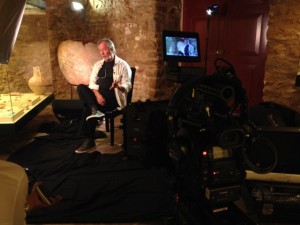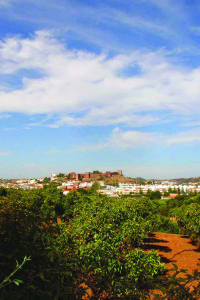Recent archaeological evidence offers new proof for the claim in the book that the origin of our Western Alphabet is much older than previously thought.
A recently discovered relic from the era of King Solomon, together with others found earlier in Pakistan, Palestine and Iberia, indicate that the script from which the Western Alphabet developed is from a much earlier Iberian one that far predated Phoenician.
The current version of history dictates that our alphabet evolved from one originally devised by the Phoenicians, who probably used an earlier Semitic script as a template. Yet in the book I assert that the Semitic alphabet was really a much older script that had found it´s way to the Middle East from Iberia. I claim proof that this old script, which experts already accept originated in south west Iberia, is much older than originally thought and that it´s use had spread over a wide part of the world thousands of years before the Phoenicians ever existed. Academics refer to it as the “South West Script” or “Luso-Iberico Script”, but were somewhat bewildered when samples first started to be unearthed during the last century in southern Portugal as a percentage of the characters were the same as Phoenician. Rather than consider it as a relic script from a much earlier era as the first finds indicated, they proceeded to shoehorn it into their version of history and pronounced that it must have developed from Phoenician in the Iron Age, around 600 to 700 BC., when the Phoenicians were trading with the area.
Goliath, David and King Solomon.
Just three of the many examples that I cite to disprove this are small pieces of pottery unearthed in recent times. (See illustrations) One was discovered by the respected Israeli Archaeologist, Dr. Aren Maeir, in the ancient Palestine city of Gath that was reputed to have been the home of Goliath. It was dated to about 950 BC and Maeir claimed it was decorated with characters from an older script that spelt out the local name for Goliath. It was therefore the first proof ever found that the famous biblical figure of Goliath actually existed. On seeing this story illustrated in an English newspaper, I immediately recognised that the inscription was made up of letters from the ancient Iberian script and only one was the same as Phoenician. Yet, according to the experts, the Luso-Iberico Script with it´s percentage of different characters did not even exist in 950 BC., but this evidence would suggest that was simply not true. It would appear that use of the script had already spread over a wide area.

Another very recent find, which has caused controversy in academic circles, confirms this analysis. The current issue of the Israel Exploration Journal details a find made by Israeli Archaeologist Dr. Eilat Mazar, near Jerusalem’s Temple Mount. It is dated to the era of King Solomon around 1000BC and is described as the oldest alphabetic written text to be found in Jerusalem. It is crudely incised just below the top of a broken jar and the archaeologists think it is an early form of Canaanite, not Hebrew. Only one of the letters is similar to Phoenician but all of the six discernible ones are very similar to characters in the Luso-Iberico Script. The controversy has been sparked by other experts claiming the letters are from the oldest known Hebrew script known as “Early Alphabetic Script” which was created earlier in the second millennium. None of the “experts” seem to have noticed that it incontrovertibly matches the ancient Iberian script.

Ancient Pakistan
The third piece of pottery is an even more dramatic example. It was discovered in excavations in a city from the Harappan civilisation in Pakistan, dating from around 3,000 BC. I first saw the example on the BBC news website, where it can still be found. I again immediately recognised that the characters it was decorated with were the same as the Luso Iberico Script, but in those letters that were exclusive to it and were not the same as Phoenician. It would be more than 2,000 years before the Phoenicians even existed as a nation, so again it is powerful and indisputable evidence that the Iberian script existed long before Phoenician or Caananite scripts.

Earlier than 10,000 BC.
The book illistrates numerous other examples of archaeological finds from over twenty cultures on which letters from this ancient alphabet appear. For example, one is from France and has been dated to before 10,000 BC, with others from Egypt dated from 3,000 to 12,000 BC that were found by the famous Scottish Egyptologist, William Flinders Petrie. However, the greatest numbers of finds are from Iberia, particularly southern Portugal where the script appears to have been perpetuated the longest. Some are indisputably dated to early eras such as on a dolmen in Alvao in Portugal from six thousand years ago
.
The Plato connection.
Interestingly, one of Plato´s clues was that the Atlanteans had a form of writing. Also, Strabo, the famous Greek chronicler known as “The Geographer”, wrote that the inhabitants of south west Iberia were very cultured and claimed to have records written in their own script dating back to 6,000BC. Just another coincidence perhaps?




